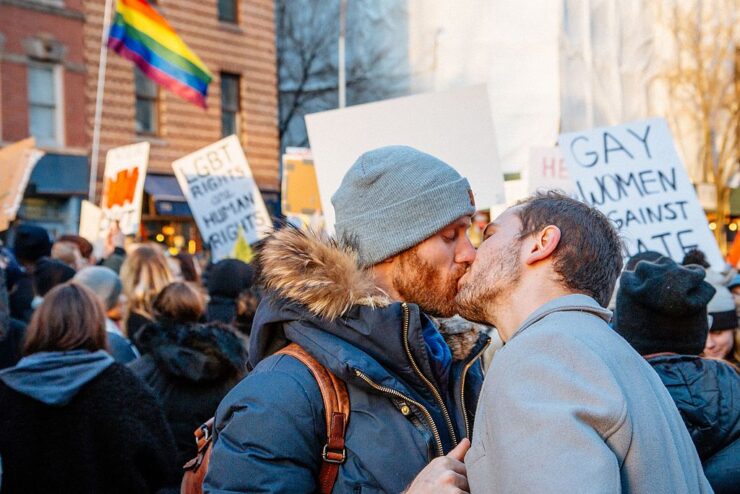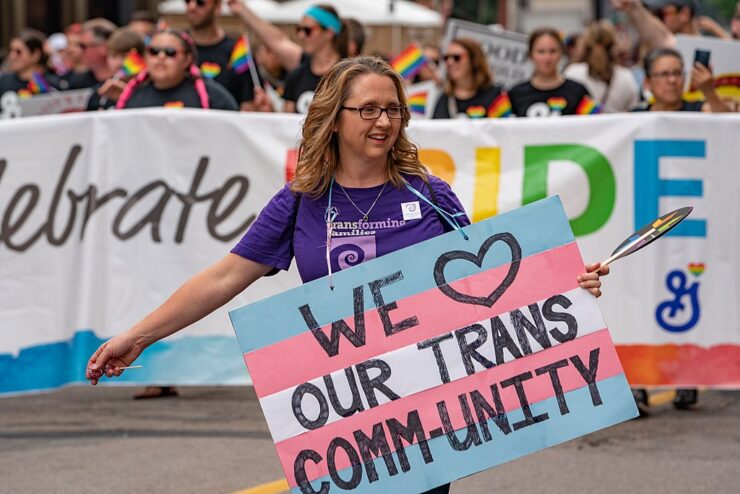Reagan Persaud is a children law Barrister for Spire Barristers. She is also the first and only member of the Bar from a minority ethnic background who openly identifies as a trans woman.
For LGBTQ+ History Month, she explores the history of LGBTQ+ rights in the UK and how it teaches us a valuable lesson in allyship and kindness.
LGBTQ+ people are no new phenomena. Emperor Hadrian, who ruled Britain from 117 to 138 and is famously known for building Hadrian’s Wall, had many male lovers. He was even in a relationship with a man whom he had worshipped as a god.
He was not the first. Roman society was far more tolerant of queer life. Museums are now finally recognising that Emperor Elagabalus, was, in fact, a trans woman who wanted to be known by female pronouns.
The harsh reality of LGBTQ+ history
Sadly, over the ages, and most likely linked to the rise of religions which categorised such behaviours as a ‘sin’, a wave of intolerance took hold and impacted greatly on the lives of LGBTQ+ people. The Buggery Act of 1533 criminalised homosexuality, and saw Henry VIII condemn the “detestable and abominable Vice of Buggery committed with mankind or beast” to be punishable by death.
The ramifications of such policies were wide-reaching, with LGBTQ+ people having to hide who they were to fit into what was socially and legally acceptable. This level of oppression was to impact on generations of queer people for centuries.
In the 1950s, over 1000 gay men were in prison in England and Wales. There were a number of high-profile arrests and trials, including that of scientist, mathematician and war time decoder Alan Turing, convicted in 1952 of “gross indecency”. Generations of people who could have contributed to and been valuable to society were suppressed and unable to shine because they committed the crime of existing authentically.
Astute readers will also be aware of Margaret Thatcher’s Section 28 restrictions which prohibited the “promotion of homosexuality” by schools and local authorities. To be clear, the Act banned the teaching homosexuality as a “pretended family relationship”. Pretended.
Sadly, the courts were not much kinder to the LGBTQ+ community. In Re D (An Infant) (Adoption: Parent’s Consent) [1977] AC 602, a mother sought for her new partner to adopt her son. The court heard evidence from the father about his homosexual relationships and lifestyle, and reached a decision that his son should be adopted.
“The danger is that, if he associates with his father he will learn about homosexuality in a most damaging way, through the peculiarity of his father. It is inconceivable that he would not learn what his father is; boys of his age are very inquisitive and perceptive…[which the court felt]… may lead to severance from normal society to psychological stresses and unhappiness and possibly even physical experiences which may scar them for life”.
The archaic language and concepts which frame the Judgment reflect the poor societal understanding and level of acceptance of queer people at the time.

Rally outside the Stonewall Inn. Image: Mathias Wasik.
A move towards equality
Thankfully, change was on the horizon.
The Wolfenden Report, published in 1957, marked the first real step towards acceptance. That is not to say the report was kind to the queer community, but it did reach the conclusion that “homosexuality cannot legitimately be regarded as a disease, because in many cases it is the only symptom and is compatible with full mental health in other respects”.
In 1967, The Sexual Offences Act decriminalised private homosexual acts between men aged over 21. It was a start. It was not parity and did not by any means represent equality – either in law or in social standing. It did not, overnight, remove the stigma and intolerance that had followed the queer community for centuries like a shadow waiting to swallow them whole. The law did not change in Scotland until 1980 and, for Northern Ireland, until 1982.
In 1979, The Harry Benjamin International Gender Dysphoria Association was founded to understand and treat gender dysphoria: the sense of unease that a person may have because of a mismatch between their biological sex and their gender identity.
In 1992, The World Health Organisation declassified homosexuality as a mental illness and, in 1994, the age of consent for homosexual relationships between men was lowered to 18 – with a further reduction to 16 in 2001, bringing parity with heterosexual relationships. In 2013, The Marriage (Same Sex Couples) Act permitted the first same-sex marriage which took place on 29 March 2014.
For trans people, the fight for equality brought – and continues to bring – unique challenges. In 2017, only 6 years ago, the European Court of Human Rights determined that forced sterilisation requirements before a person’s change of gender violated human rights. In 2019 , just 4 years ago, The World Health Organisation declassified transgender health issues as a mental illness.
The Equality Act of 2010 and the Gender Recognition Act 2004 gave protections to the trans community against discrimination and created a legal mechanism for trans people to be legally respected in their new identity.

Twin Cities Pride Parade in Downtown Minneapolis, Minnesota. Image: Tony Webster.
Does progress mean the work is done?
Whilst the UK is regarded as perhaps one of the most progressive countries when it comes to LGBTQ+ rights, the fight is by no means over. It would be naïve to assume that there are not systemic struggles that queer people face every day. For young people, their vulnerabilities due to age and understanding make these risks even more stark.
The statistical bulletin for hate crimes recorded in England and Wales by the police perhaps reflects the reality of lived experiences for members of the LGBQT+ community:
- In the year 2018/19, there were 14,161 hate crimes committed because of the person’s sexual orientation. By 2022/23, this had risen to 24,102.
- In the year 2018/19, there were 2,253 transgender hate crimes. By 2022/23, there were 4,732 (a rise of 48%).
In respect of the rise in trans hate crimes, the police say this may be due to social media users, media platforms and politicians being emboldened to comment freely on the lives of transgender people. This “may have led to an increase in these offences, or more awareness in the police in the identification and recording of these crimes.”
Lessons to be learnt
In a modern democracy, diversity and acceptance are pillars of our society. Allowing people to live their lives free from harassment and stigma ensures everyone can contribute their utmost and reach their full potential.
Given the troubling history and continuing hate crimes identified above, my greatest wish for the queer community is that they have something more than this landscape upon which to exist.
So how do we achieve this?
- Be teachable. Take on-board the history highlighted above. Be willing to listen to queer people about their experiences and to offer support.
- Be accepting. Remember that human beings are more than what they look like or who they love. A person’s worth is not defined by their gender, sex or sexual orientation.
- Be alive to intersectionality. The struggle is much greater for people who are marginalised on multiple fronts.
- Be an ally. Be willing to challenge the poor behaviours of others and make it known that abusive behaviours will not be tolerated.
In a world where we can be anything, let’s start by being kind to each other. Cohesion and acceptance won’t happen overnight. But it has to start somewhere, and I hope that it can start with you.
Reagan Persaud is a children law barrister at Spire Barristers. She is the first and only member of the Bar from a minority ethnic background who openly identifies as a trans woman. She is a very passionate advocate for equal, diversity and inclusion, having written several pieces on the issue.
